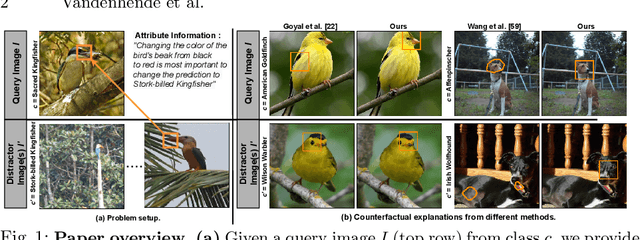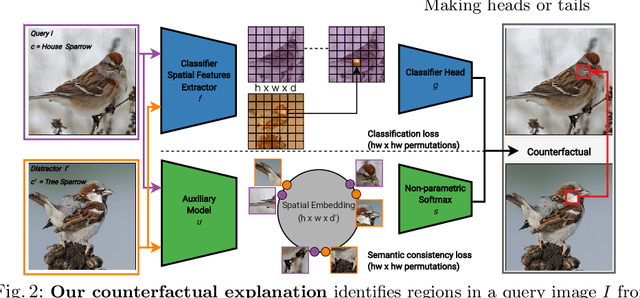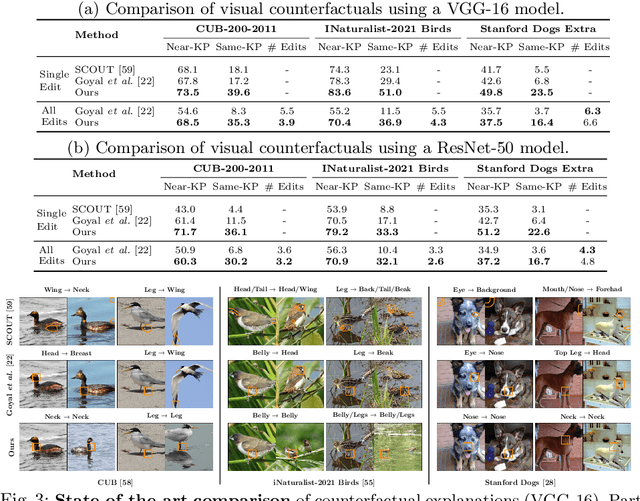Making Heads or Tails: Towards Semantically Consistent Visual Counterfactuals
Paper and Code
Mar 24, 2022



A visual counterfactual explanation replaces image regions in a query image with regions from a distractor image such that the system's decision on the transformed image changes to the distractor class. In this work, we present a novel framework for computing visual counterfactual explanations based on two key ideas. First, we enforce that the \textit{replaced} and \textit{replacer} regions contain the same semantic part, resulting in more semantically consistent explanations. Second, we use multiple distractor images in a computationally efficient way and obtain more discriminative explanations with fewer region replacements. Our approach is $\mathbf{27\%}$ more semantically consistent and an order of magnitude faster than a competing method on three fine-grained image recognition datasets. We highlight the utility of our counterfactuals over existing works through machine teaching experiments where we teach humans to classify different bird species. We also complement our explanations with the vocabulary of parts and attributes that contributed the most to the system's decision. In this task as well, we obtain state-of-the-art results when using our counterfactual explanations relative to existing works, reinforcing the importance of semantically consistent explanations.
 Add to Chrome
Add to Chrome Add to Firefox
Add to Firefox Add to Edge
Add to Edge